
views
X
Research source
Lactation is the production of milk in the mammary glands and occurs naturally during pregnancy and post-pregnancy breastfeeding. In this article, we’ll cover all the best ways to induce lactation and encourage your milk supply. Read on and rest easy knowing you're doing all you can as a non-gestational parent to boost your ability to feed your beautiful baby.
- Ask your doctor to provide a regimen of hormones about 8 months before you’d like to start nursing. Take these hormones for 6 months or longer, and then switch to pumping.
- Induce lactation by pumping 3 times a day for 5 minutes at a time. Do this for at least 2 days before increasing to 10 minutes every 4 hours.
- Start breastfeeding as soon as you have your baby, 8-12 times a day. This will awaken the nursing instinct and encourage your milk supply.
Inducing Lactation
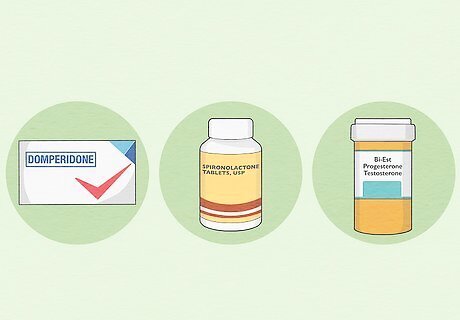
Begin hormone therapy 8 months before you want to nurse. Ask your doctor to provide a regimen of hormones starting about 8 months before you would like to start nursing. Your doctor will prescribe estrogen or progesterone to mimic the effects of pregnancy on your body. Take these hormones for 6 months or as prescribed, then switch to pumping. To induce lactation, Transgender women may be prescribed domperidone for lactation, spironolactone to block androgens, and estradiol and progesterone for feminizing hormone therapy.
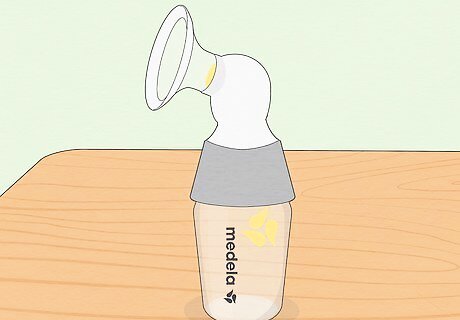
Stimulate milk production with a breast pump. Two months before you want to start breastfeeding, begin using a breast pump. The breast pump will stimulate the hormone prolactin, which causes your body to produce milk. Begin by pumping 3 times daily for 5 minutes at a time. Do this for at least 2 days. Slowly increase your pumping frequency until you are pumping for 10 minutes every 4 hours. Set an alarm to pump at least once during the nighttime. Once you feel comfortable with this, increase the frequency slowly until you are pumping every 2 to 3 hours for 15 to 20 minutes.
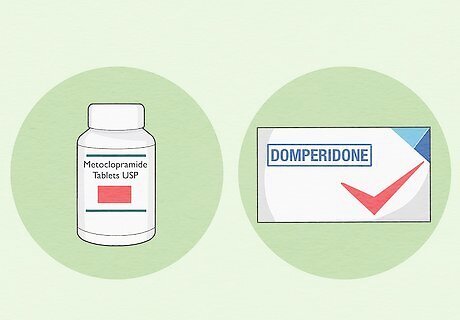
Ask your doctor about medications to induce lactation. If you don't have time for hormone therapy, you may be able to take other medications, such as Metoclopramide or Domperidone. Medicines that stimulate prolactin are called "galactagogues." The effectiveness of these drugs is variable. Don't use Metoclopramide if you suffer from depression or asthma. If you live in the United States, your doctor may not prescribe you Domperidone, as it is not FDA-approved.
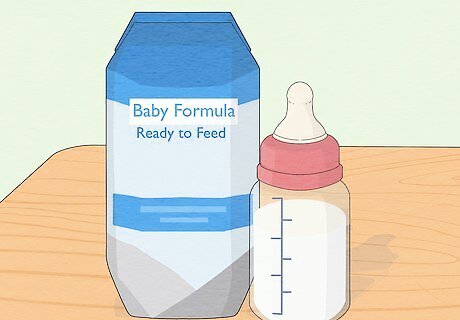
Supplement your supply with formula or pumped breast milk. With induced lactation, you probably won't come up with quite enough breast milk to nourish a child, especially during the first few weeks—this is totally normal! In between nursing, feed your child with formula or breast milk you have pumped. You may also use pasteurized milk from a donor. Continue to use your breast pump when you bottle feed. This will encourage your breasts to continue producing milk. Ask your doctor about getting a supplemental nursing system. This device attaches to your breast, delivers donor milk or formula, and will also help stimulate milk production.
Promoting Production

Start breastfeeding as soon as you receive your baby. Hold your baby against your skin as soon as you come in contact with them. This will help awaken the nursing instinct, and your baby should begin to breastfeed within the hour. If you have induced lactation, do the same, but have some formula or donated milk on hand to supplement what you have. If you wait too long to start nursing, it can lower your milk supply.

Breastfeed your baby 8-12 times a day. Breastfeed 8-12 times a day for the first several weeks. This means breastfeeding every 2-3 hours, including several times at night. Doing it less may lower your milk supply. Don't skip sessions. If your baby is sleeping or needs to be bottle-fed, pump at the time you would normally be nursing. Don't wait for your breasts to refill. You should still have milk even when your breasts are not swollen. EXPERT TIP Sarah Siebold, IBCLC, MA Sarah Siebold, IBCLC, MA International Board Certified Lactation Consultant Sarah Siebold is an International board certified Lactation Consultant (IBCLC) and Certified Lactation Educator Counselor (CLEC) based in Los Angeles, California. She runs her own lactation consulting practice called IMMA, where she specializes in emotional support, clinical care, and evidence-based breastfeeding practices. Her editorial work about new motherhood and breastfeeding has been featured in VoyageLA, The Tot, and Hello My Tribe. She completed her clinical lactation training in both private practice and outpatient settings through the University of California, San Diego. She also earned her M.A. in English and American Literature from New York University. Sarah Siebold, IBCLC, MA Sarah Siebold, IBCLC, MA International Board Certified Lactation Consultant Our Expert Agrees: As you breastfeed, make sure the baby's mouth is open wide to ensure that they're getting enough milk. Also, listen for rhythmic sucking and swallowing noises.
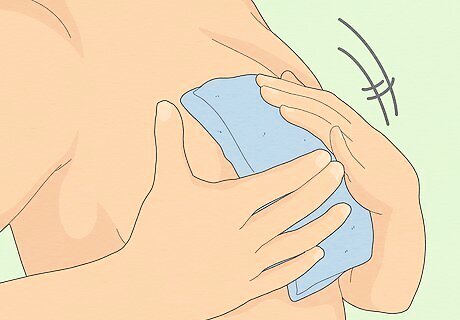
Stimulate your milk ejection or “let-down” reflex. There are many ways to signal to your body that you want to nurse, though it may be enough to hold your baby against your bare skin. To simulate your milk-ejection reflex, try doing the following: Apply a warm compress or towel soaked in warm water to your breast. Stroke your breast lightly with your fingertips. This will relax you and can stimulate your milk-ejection reflex. Massage your breast much like you would conduct a self-exam. Press your fingers flatly and firmly against your milk glands and milk ducts. Massage them in slow, firm circles. Massage from the outside in a spiral towards the areola. Lean forward and lightly jiggle your breasts. Gravity should help draw milk into your nipples.
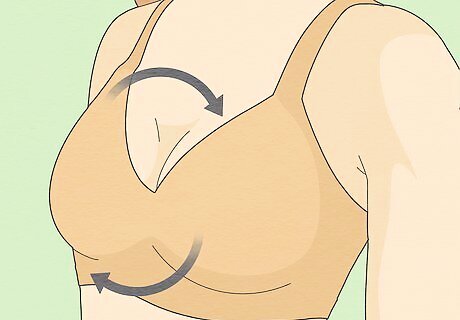
Nurse on both sides. After your baby has nursed energetically on one side and has slowed down, switch them to the other breast. Your milk supply will decrease if your baby strongly favors one breast over the other.
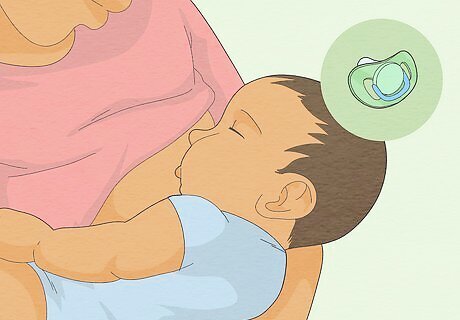
Wait before introducing a pacifier. Your baby's latch will be stronger if they learn how to suckle your nipple before they learn how to suckle a pacifier. If you would like to give your child a pacifier, wait 3-4 weeks after birth. The stronger your baby's latch, the more milk you will produce.
Increasing Supply during & after Hormone Therapy

Add oats to your diet. Oats may help you lactate, and they’re super easy to start consuming if you haven’t been already. You don't need to talk to an expert before introducing oats to your diet—just have oatmeal for breakfast! The most traditional approach is to start the day with a bowl of oatmeal. However, some nursing parents find that oats in other forms, such as granola, cookies, and oat bran, also help.

Consider taking herbal supplements. Visit a lactation consultant before you buy any supplements, or talk to your doctor to make sure the supplements you’re interested in won't interfere with any of your existing medications. Some popular herbal supplements for increasing milk production include: Fenugreek is a traditional galactagogue (prolactin stimulator). Its effectiveness has yet to be scientifically proven, but some people report success using it to increase milk supply. Blessed thistle and alfalfa may help on their own or paired with fenugreek.

Stay hydrated. Drink water, juice, and milk to stay hydrated. Aim to drink about 8 8 fluid ounces (240 mL) glasses of liquid a day. It's fine to have some coffee and caffeinated tea, but cut down on it if you feel it's interfering with your child's sleep. If you have an alcoholic drink, wait at least 2 hours before nursing.
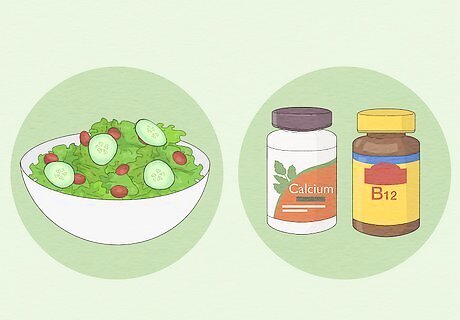
Eat a healthy diet. Eat fruits and vegetables, protein, and plenty of whole grains. Eat produce in a variety of colors, such as dark greens and bright citrus fruits. So long as your child is not exhibiting allergic reactions, eat what you would ordinarily—just aim for healthy, whole foods whenever possible. Look out for adverse reactions to cow's milk. If you eat a lot of dairies and your child shows signs of allergy, such as rash, vomiting, or bloating, stop consuming it. Talk to your doctor about taking calcium or vitamin D supplements instead. Ask your doctor or dietician about vitamins and supplements. If you are a vegan or are likely to be missing vitamins for another reason, talk to your doctor about introducing B12 or a multivitamin into your diet.
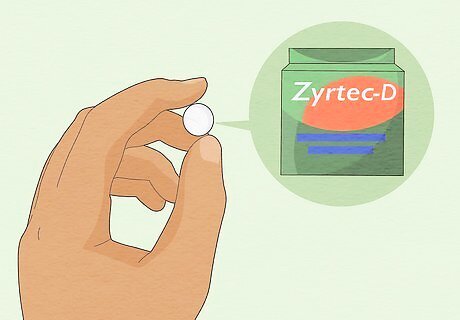
Limit your use of medications that interfere with milk production. Taking a medicine that contains pseudoephedrine, such as Sudafed or Zyrtec D, may decrease your milk supply. Some kinds of hormonal contraception may also interfere with your ability to lactate. Talk to your doctor if you are on hormonal contraception. Read the label on any medication you take. If there is a warning for nursing mothers, consult your doctor.











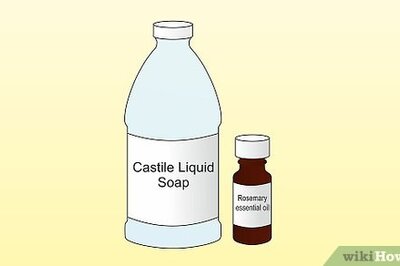




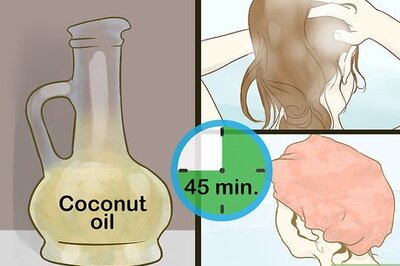



Comments
0 comment